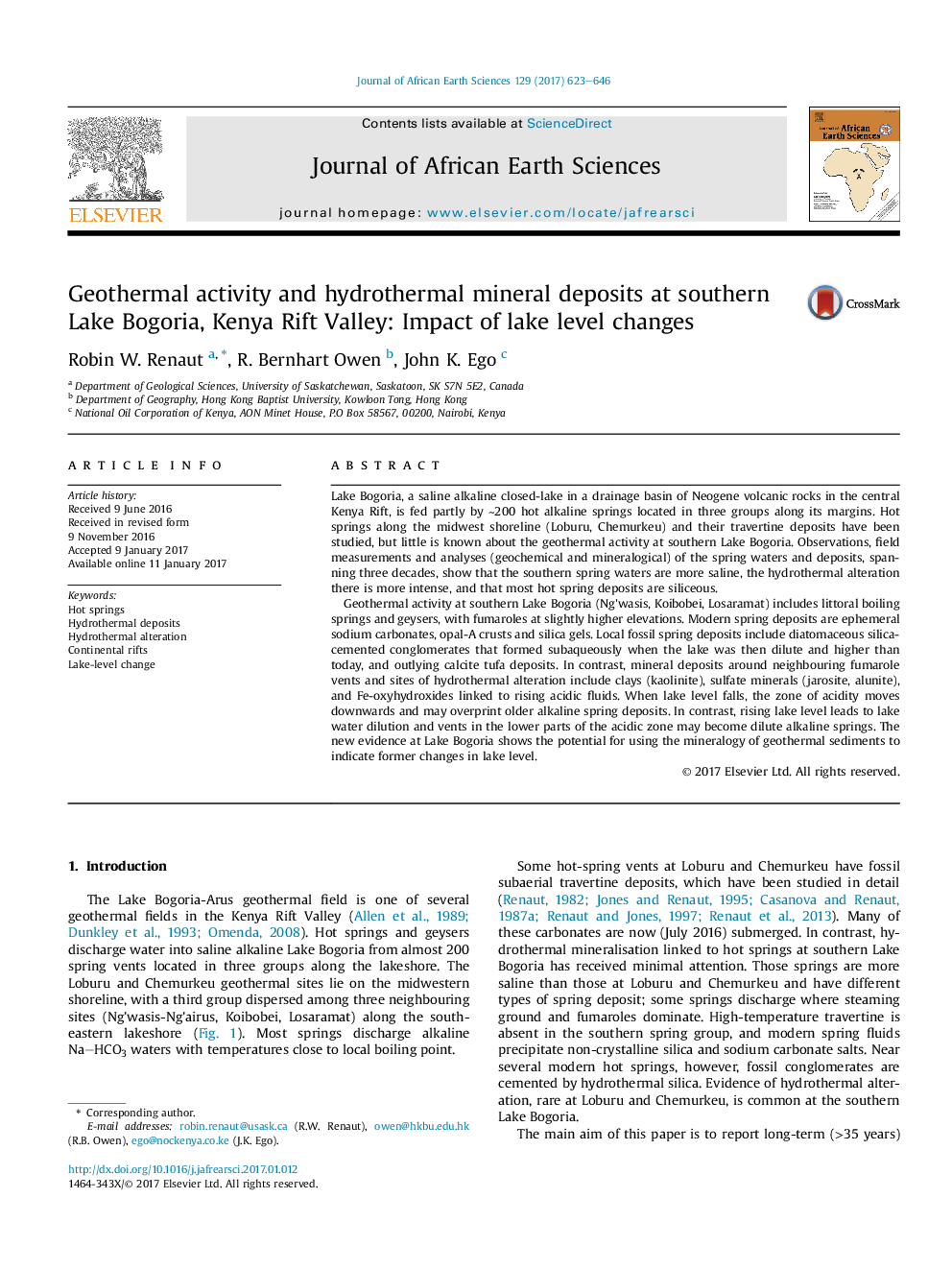| Article ID | Journal | Published Year | Pages | File Type |
|---|---|---|---|---|
| 5785720 | Journal of African Earth Sciences | 2017 | 24 Pages |
â¢First detailed description of hydrothermal activity at southern Lake Bogoria.â¢Modern spring and geyser activity is closely related to lake level.â¢Highly alkaline and acidic fluids coexist producing variable mineral assemblages.â¢Hydrothermal alteration and spring deposits are related to lake level changes.
Lake Bogoria, a saline alkaline closed-lake in a drainage basin of Neogene volcanic rocks in the central Kenya Rift, is fed partly by â¼200 hot alkaline springs located in three groups along its margins. Hot springs along the midwest shoreline (Loburu, Chemurkeu) and their travertine deposits have been studied, but little is known about the geothermal activity at southern Lake Bogoria. Observations, field measurements and analyses (geochemical and mineralogical) of the spring waters and deposits, spanning three decades, show that the southern spring waters are more saline, the hydrothermal alteration there is more intense, and that most hot spring deposits are siliceous.Geothermal activity at southern Lake Bogoria (Ng'wasis, Koibobei, Losaramat) includes littoral boiling springs and geysers, with fumaroles at slightly higher elevations. Modern spring deposits are ephemeral sodium carbonates, opal-A crusts and silica gels. Local fossil spring deposits include diatomaceous silica-cemented conglomerates that formed subaqueously when the lake was then dilute and higher than today, and outlying calcite tufa deposits. In contrast, mineral deposits around neighbouring fumarole vents and sites of hydrothermal alteration include clays (kaolinite), sulfate minerals (jarosite, alunite), and Fe-oxyhydroxides linked to rising acidic fluids. When lake level falls, the zone of acidity moves downwards and may overprint older alkaline spring deposits. In contrast, rising lake level leads to lake water dilution and vents in the lower parts of the acidic zone may become dilute alkaline springs. The new evidence at Lake Bogoria shows the potential for using the mineralogy of geothermal sediments to indicate former changes in lake level.
